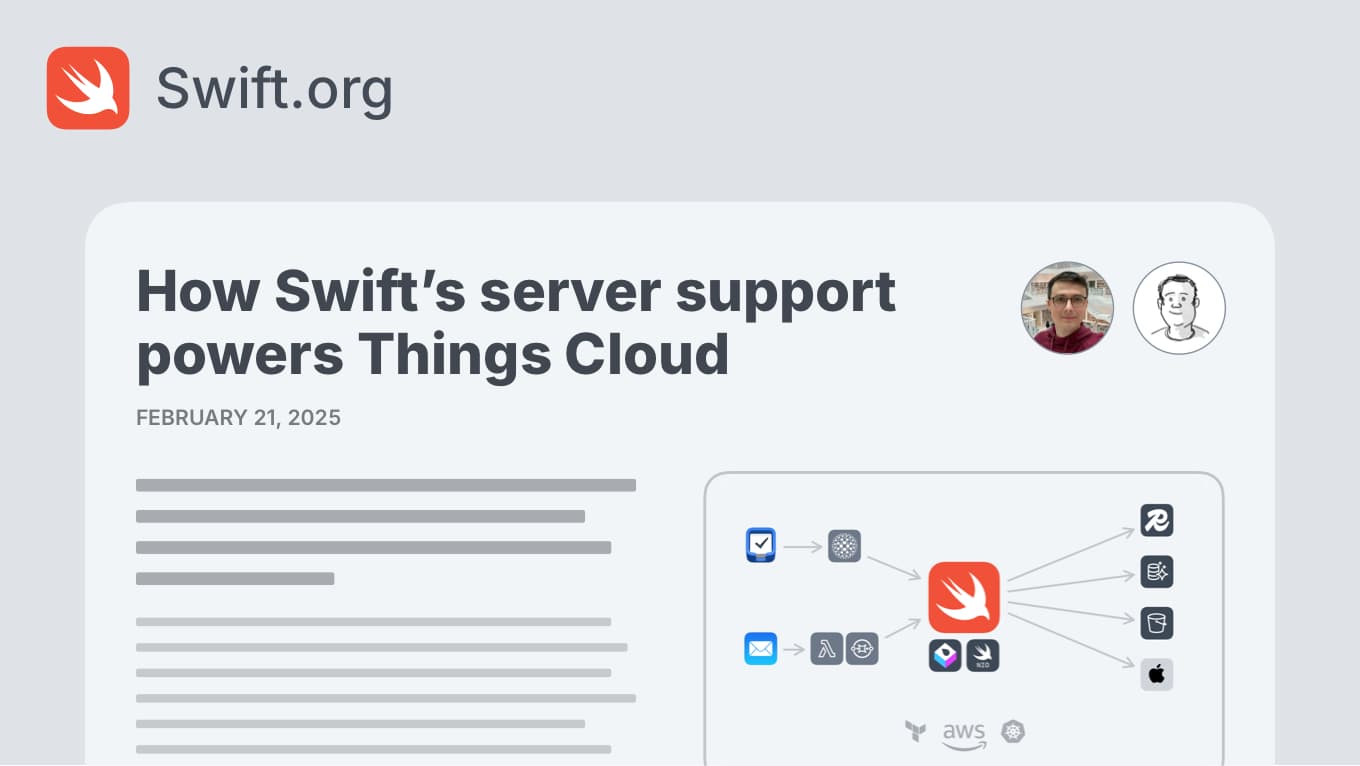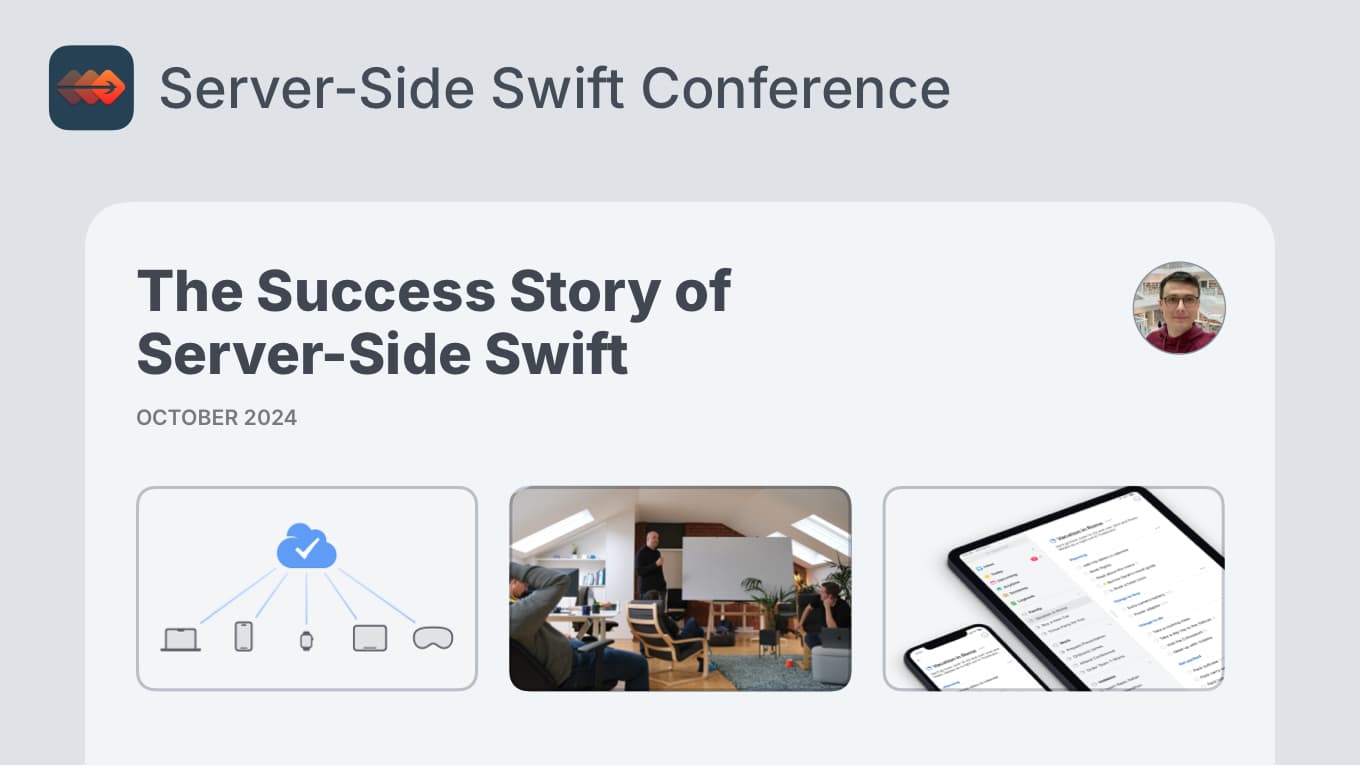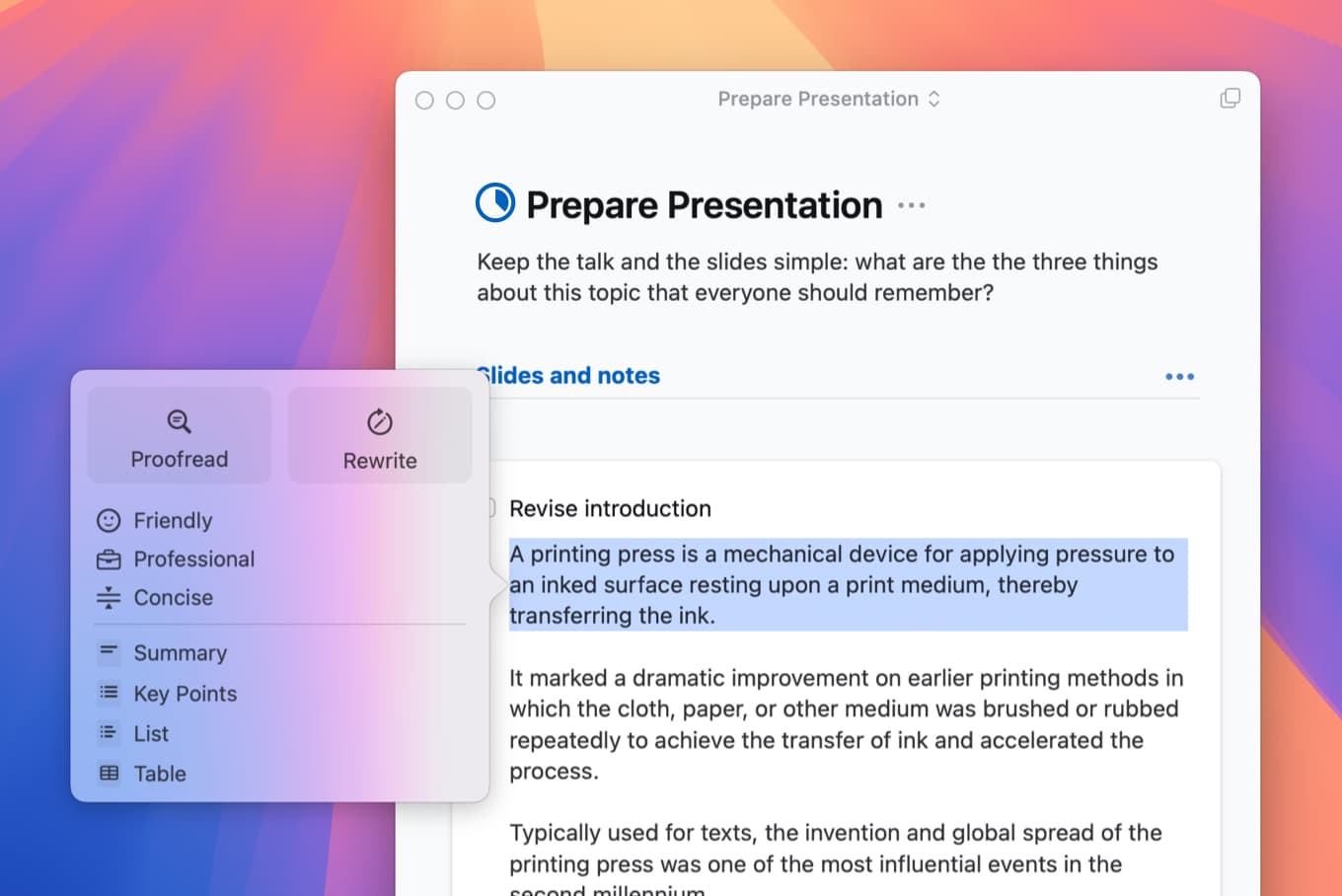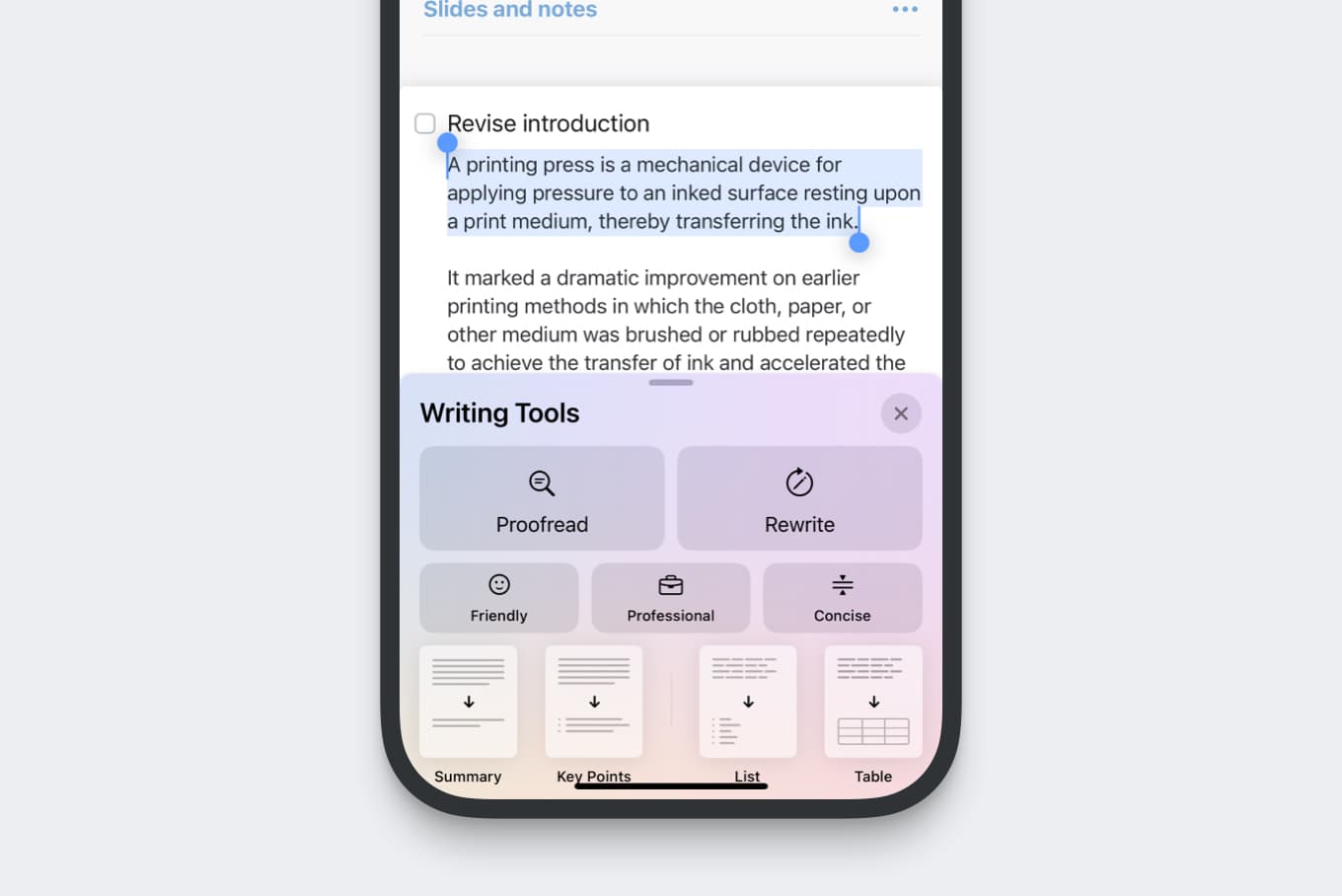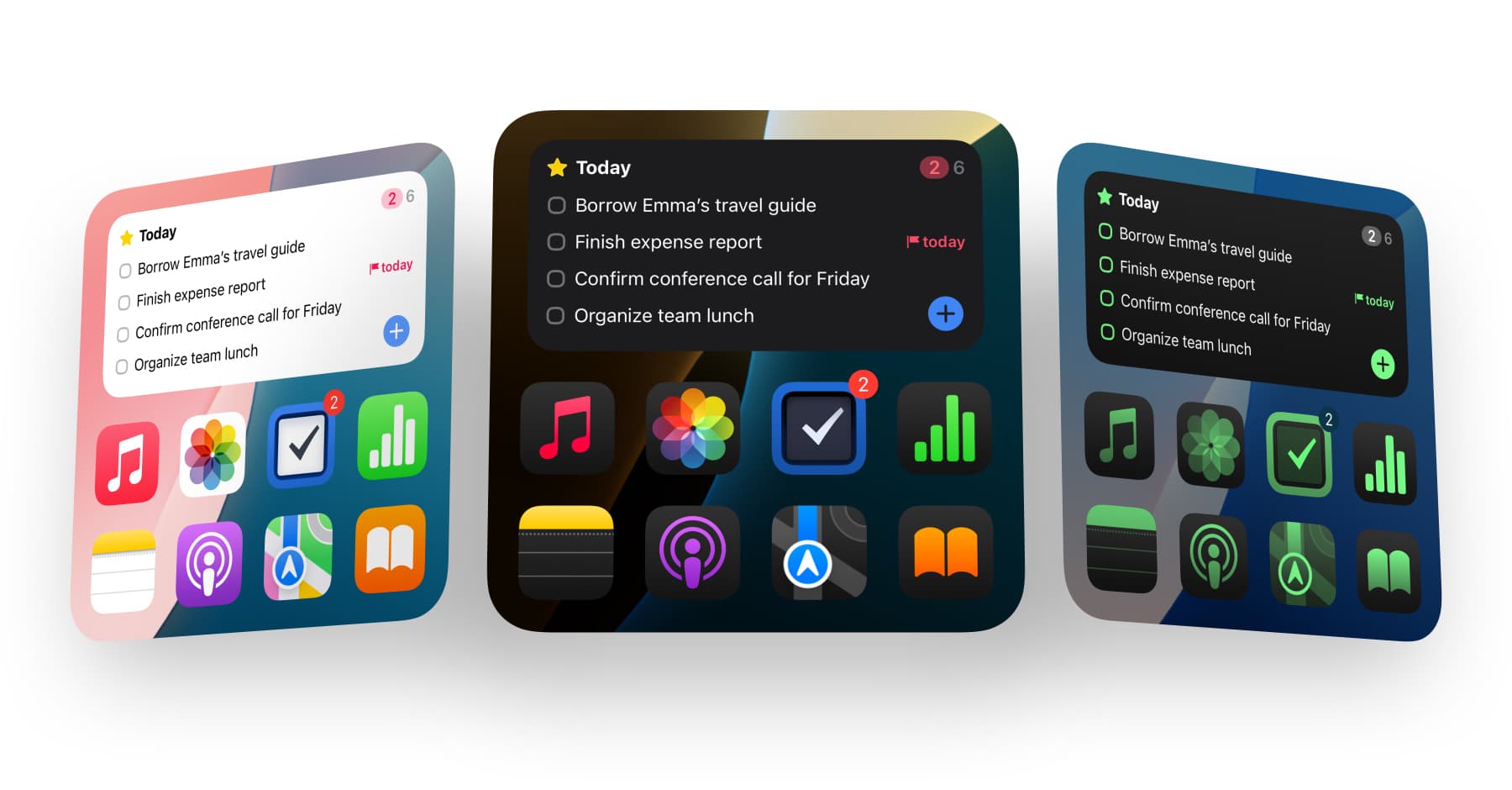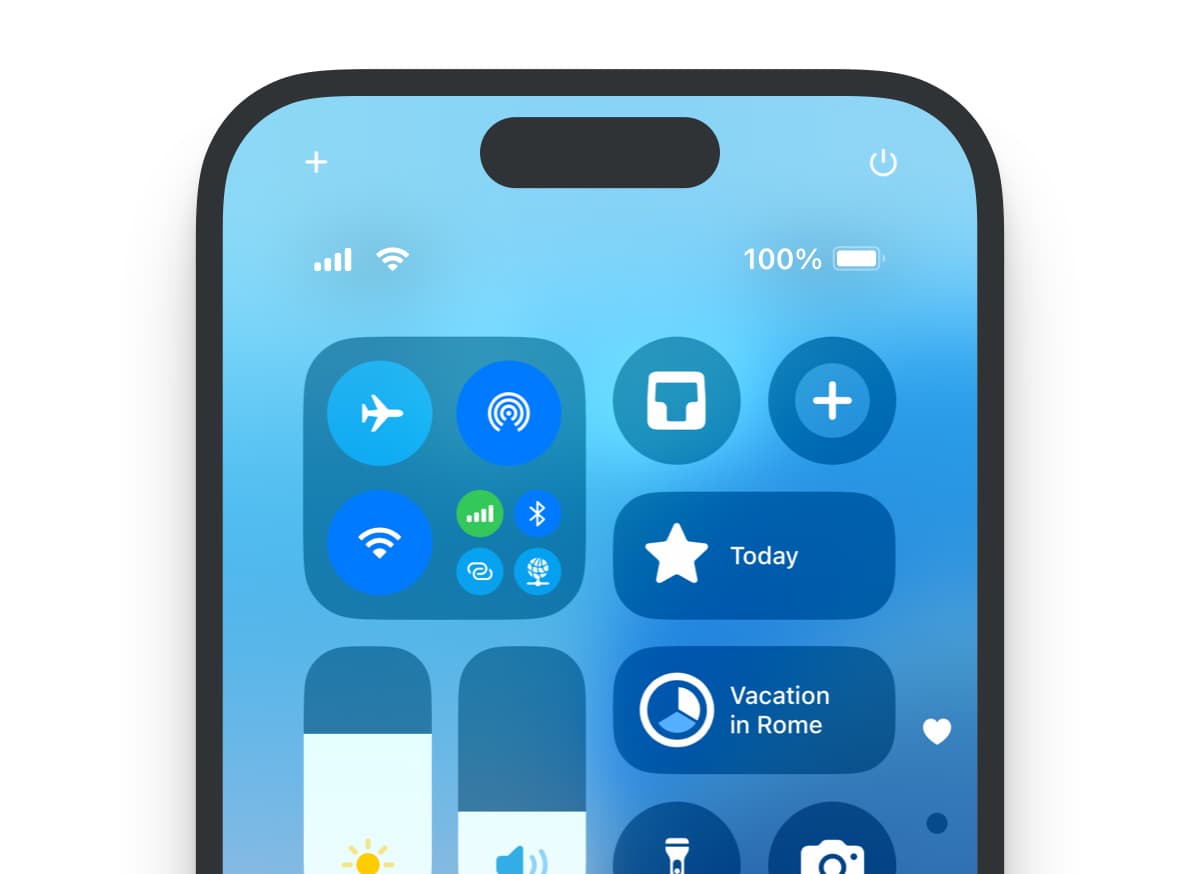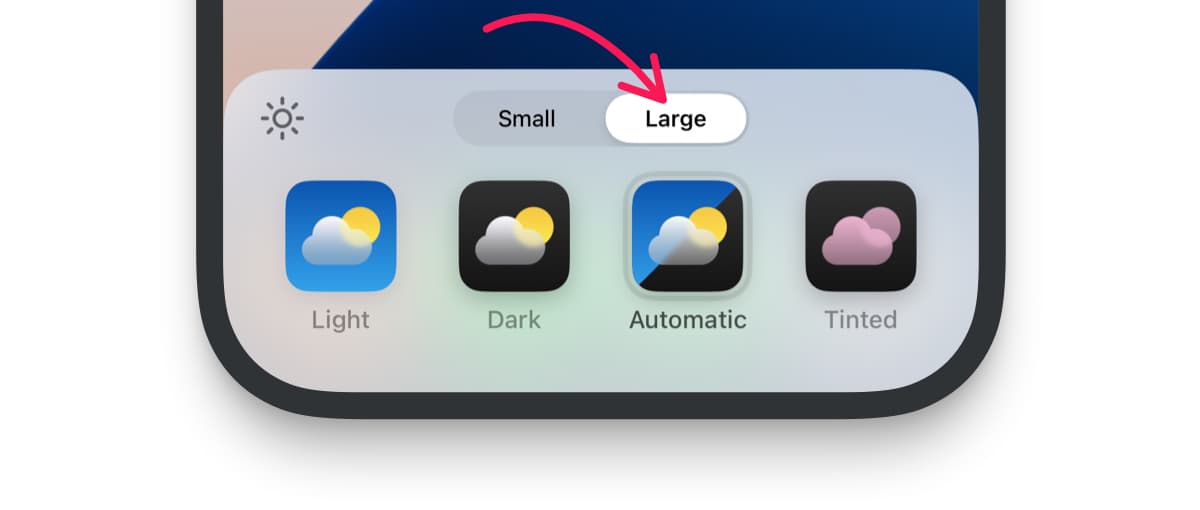Things is ready for Apple’s OS 26, with a thoroughly refreshed interface, a new app icon, better windowing on iPad, and many more improvements. Available now in Things 3.22!
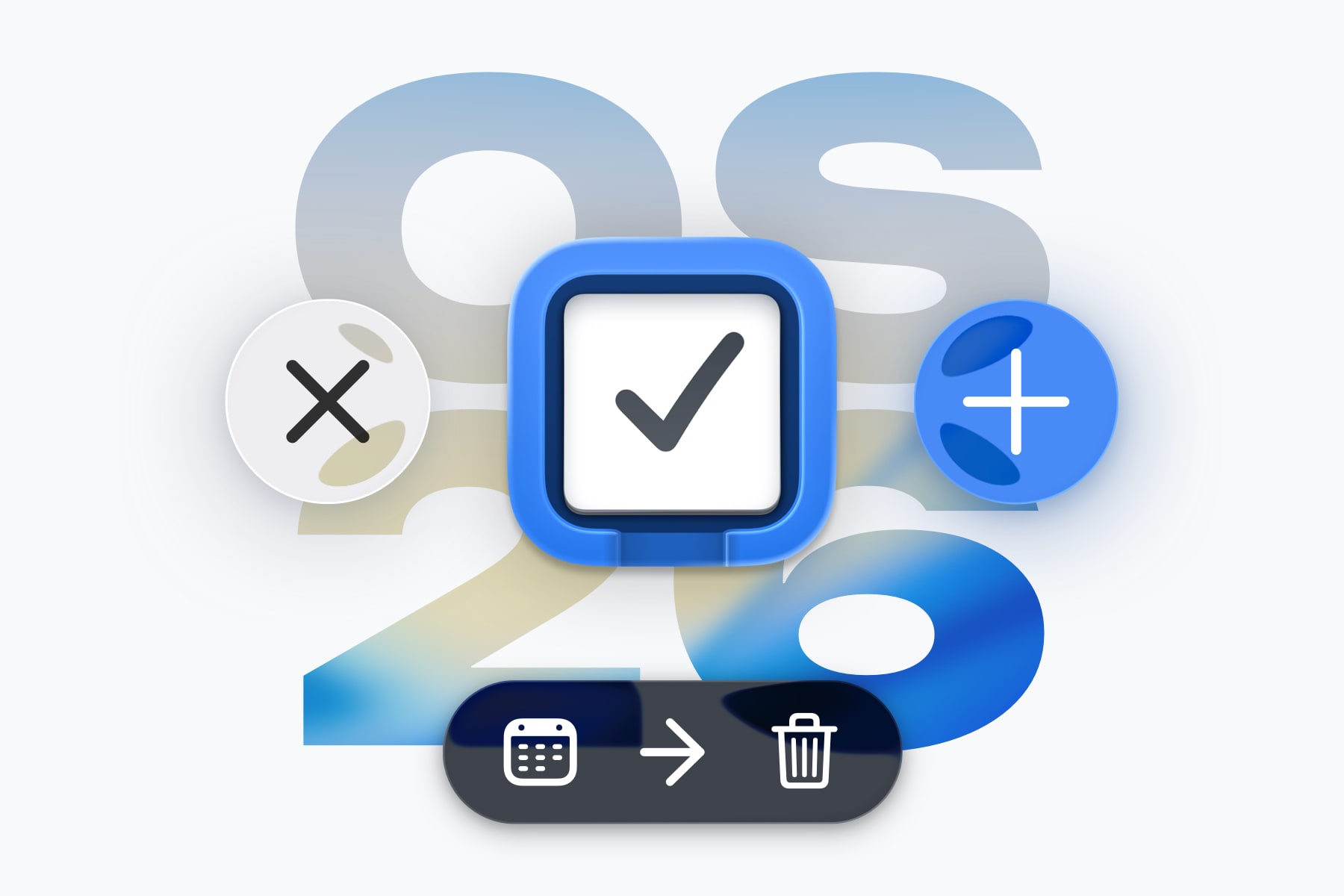
A new icon
The first thing you’ll spot is Things’ iconic blue box, refined and realigned to sit beautifully within OS 26. It’s familiar at a glance and unmistakably Things.
This new icon is available in four variants – Default, Dark, Tinted, and Clear – to match whatever appearance style you choose for your device.


Fresh look & feel on OS 26
We’ve tastefully refreshed Things’ interface. You’ll notice adjustments everywhere: in the curvature of windows, to-dos, dialogs, and controls; wider spacing that feels a bit more relaxed; and a touch of glass in the sidebar that lets a hint of color shine through. We think it’s the most beautiful version of Things yet!
But it’s more than looks – it also feels new. Throughout the interface, you’ll interact with new glassy buttons that respond to your touch with a subtle glow and scale. A great example is the blue Magic Plus button. As you drag it around, notice its new liquid nature – it ever so slightly deforms its shape in response to your movements.
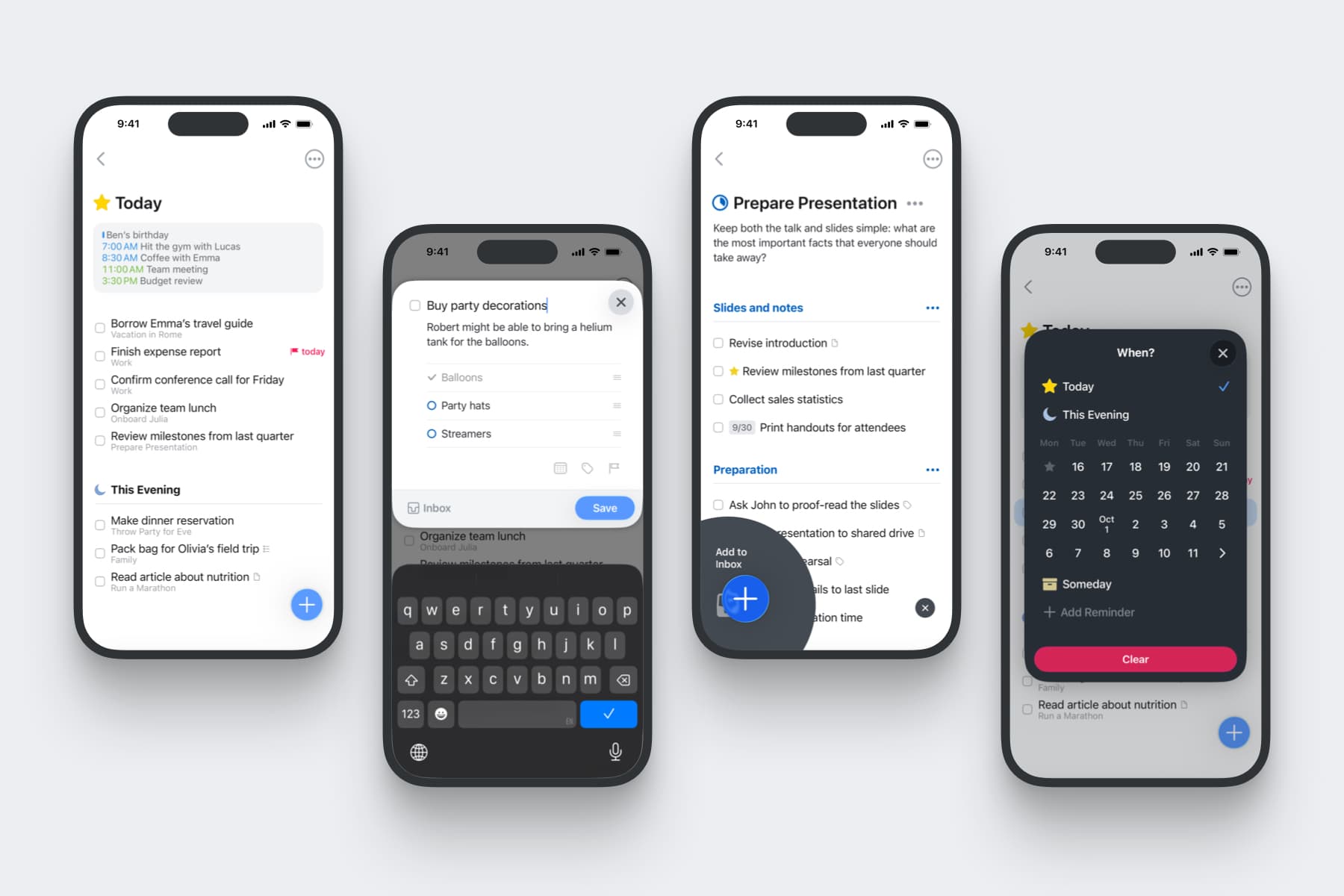
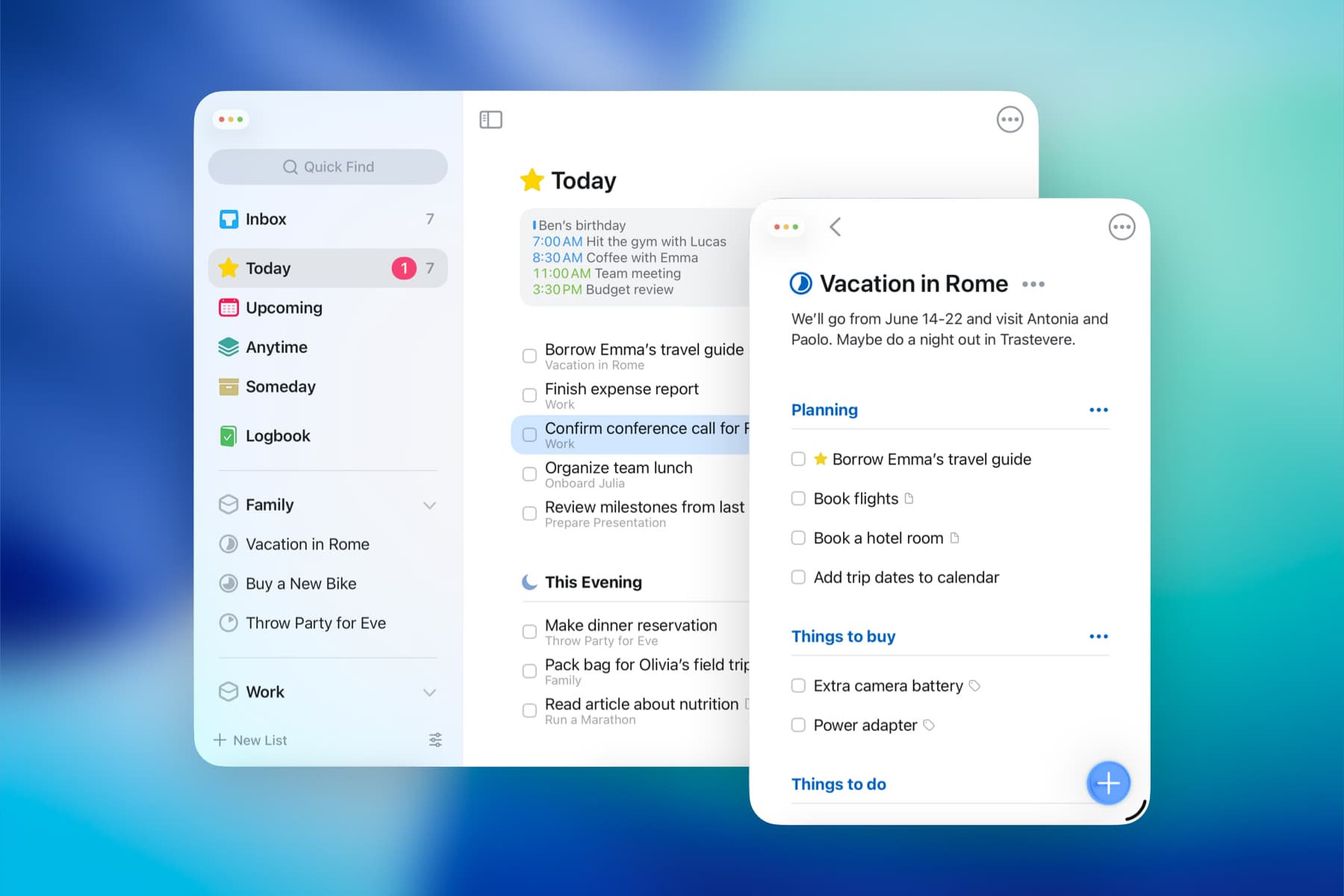
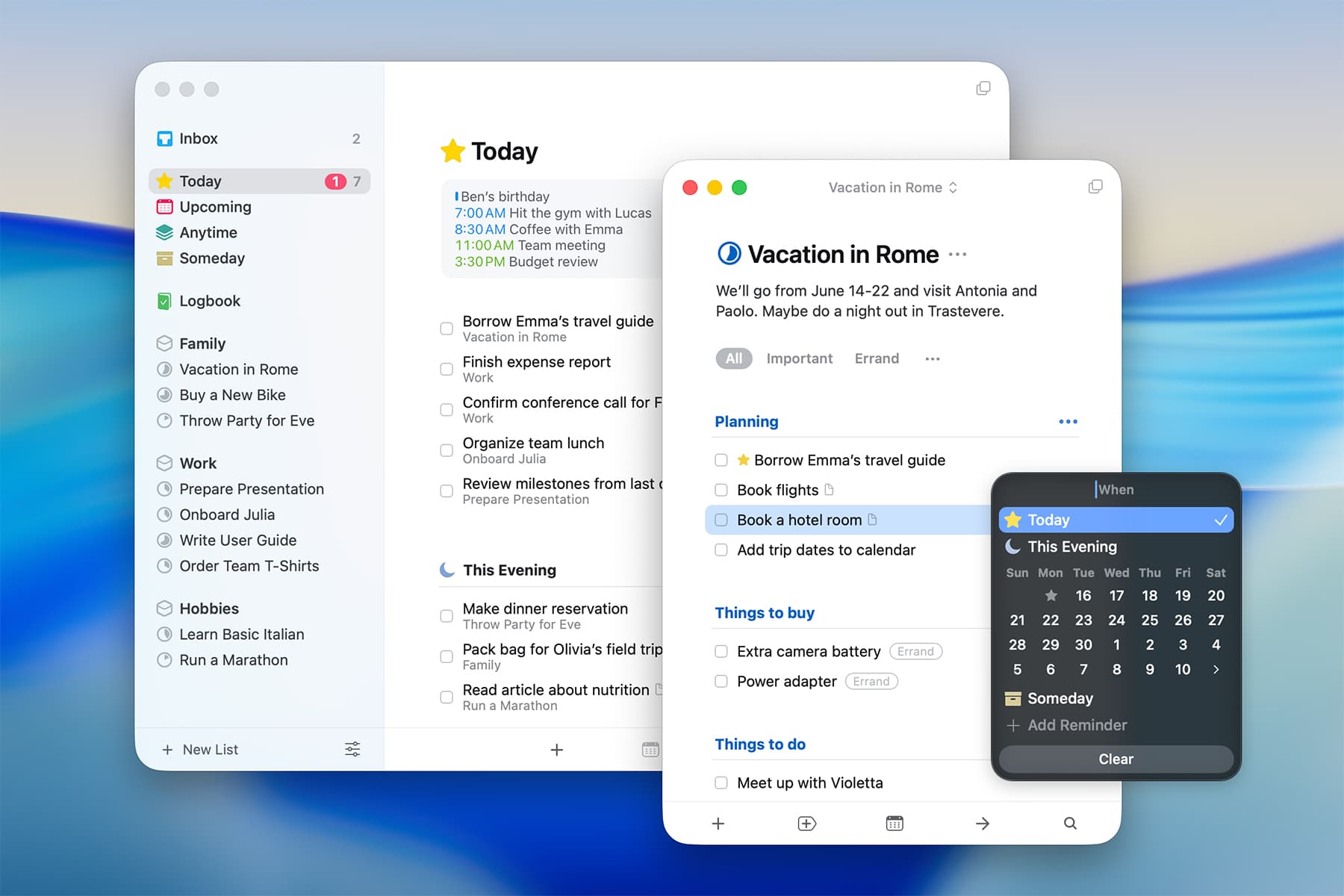
iPad windows and menus
On iPad, OS 26 brings some welcome Mac-like improvements. To try them out, you’ll need to switch to the new Windowed Apps mode in your device’s Settings.
Things smartly adapts its layout for the new mode. Your windows get traffic light controls, and you can arrange them freely on your screen. To open a new window in Things, right-click a list and choose Open in New Window, or go to File → New Window.
If you swipe down from the top edge of the screen, you’ll see that there’s also a new menu bar. We’ve updated Things’ menus to expose many powerful controls and keyboard shortcuts.
Taken together, these improvements do a lot to make Things on the iPad feel more powerful and natural to use. We’re enjoying it a lot!
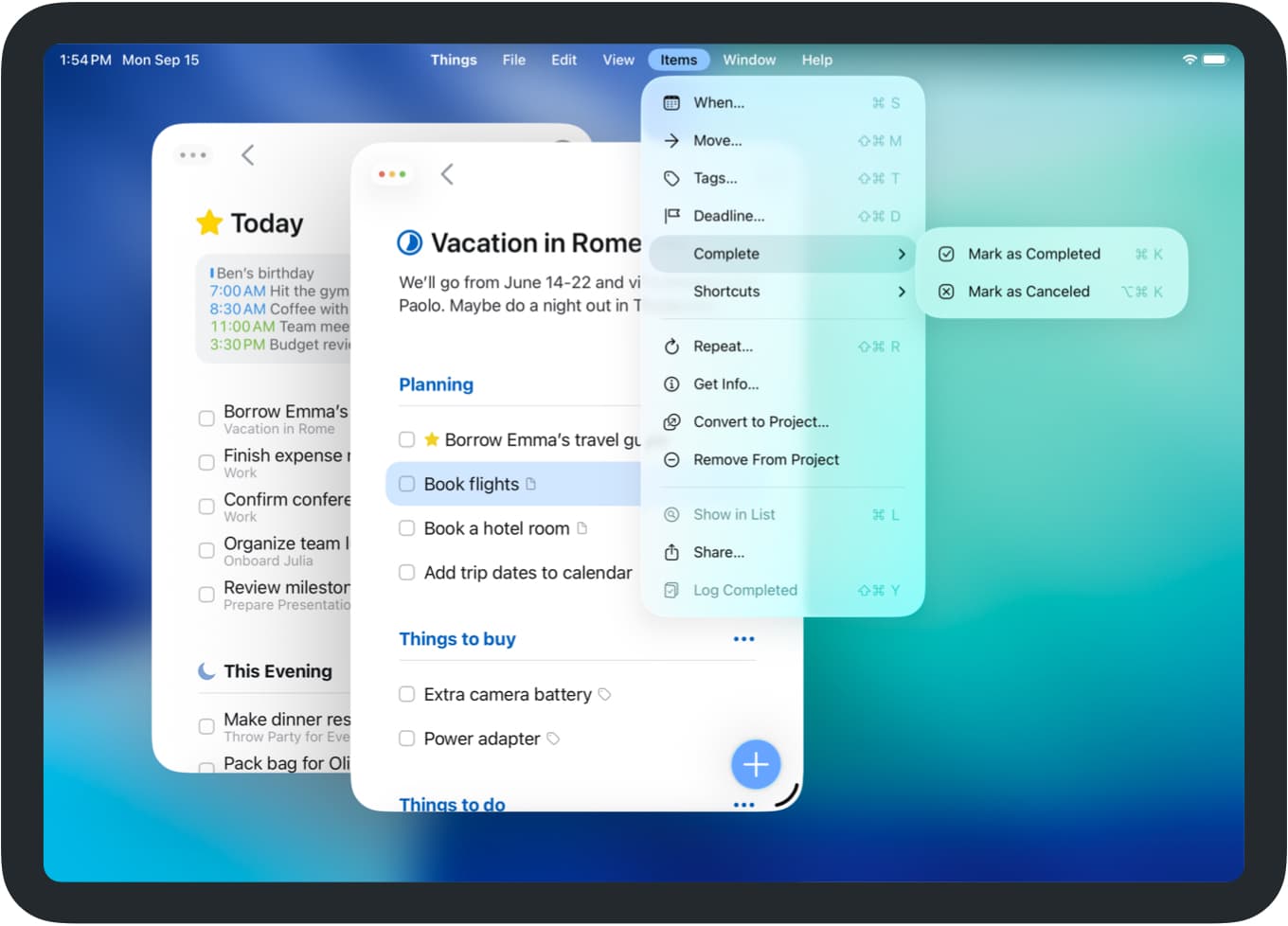
New widget styles
Last year, we updated Things’ widgets to support styles on iPhone and iPad. These styles are now available on the Mac as well. In addition to the Dark and Tinted styles, OS 26 introduces Clear – a glass-like style that lets your wallpaper shine through.

Quick controls on Mac and Watch
Things’ handy Control Center controls are now available on Mac and Apple Watch.
- On Mac, Things offers Controls for New To-Do and List (you choose which list). You can place them in Control Center, or pin them to your menu bar for one-click access.
- On Apple Watch, Things’ New To-Do Control lets you capture a thought on the go, via swipe, type, or talk.
And more
- Widgets on Vision Pro. We’ve brought Things’ widgets to Vision Pro. You can place as many as you like in your space and choose which list to show, such as Today, Deadlines, a project, or a tag.
- Writing Tools on Vision Pro. We’ve added support for Apple’s Writing Tools on Vision Pro. You can use it to quickly proofread, rewrite, summarize, or reformat the text in your notes.
- Spotlight on Mac can now create to-dos. Type “Create To-Do”, press Return, then enter your title. Your new to-do is created in your Inbox, even if Things isn’t running.
- Apple Shortcuts has a new Use Model action that lets you bring AI into your workflows with Things. Use on-device or cloud models to create new to-dos with AI-assisted writing, or pull data from Things via its Find Items action and pass it to the AI model as context. Learn more about Things’ actions for Apple Shortcuts.
Get it now
Things 3.22 is available today as a free update on the App Store for Mac, iPad, iPhone, Watch, and Vision Pro. Note that you’ll also need to install OS 26 for the new design and features to show up!
We hope you enjoy the new look and other great refinements. ✨

